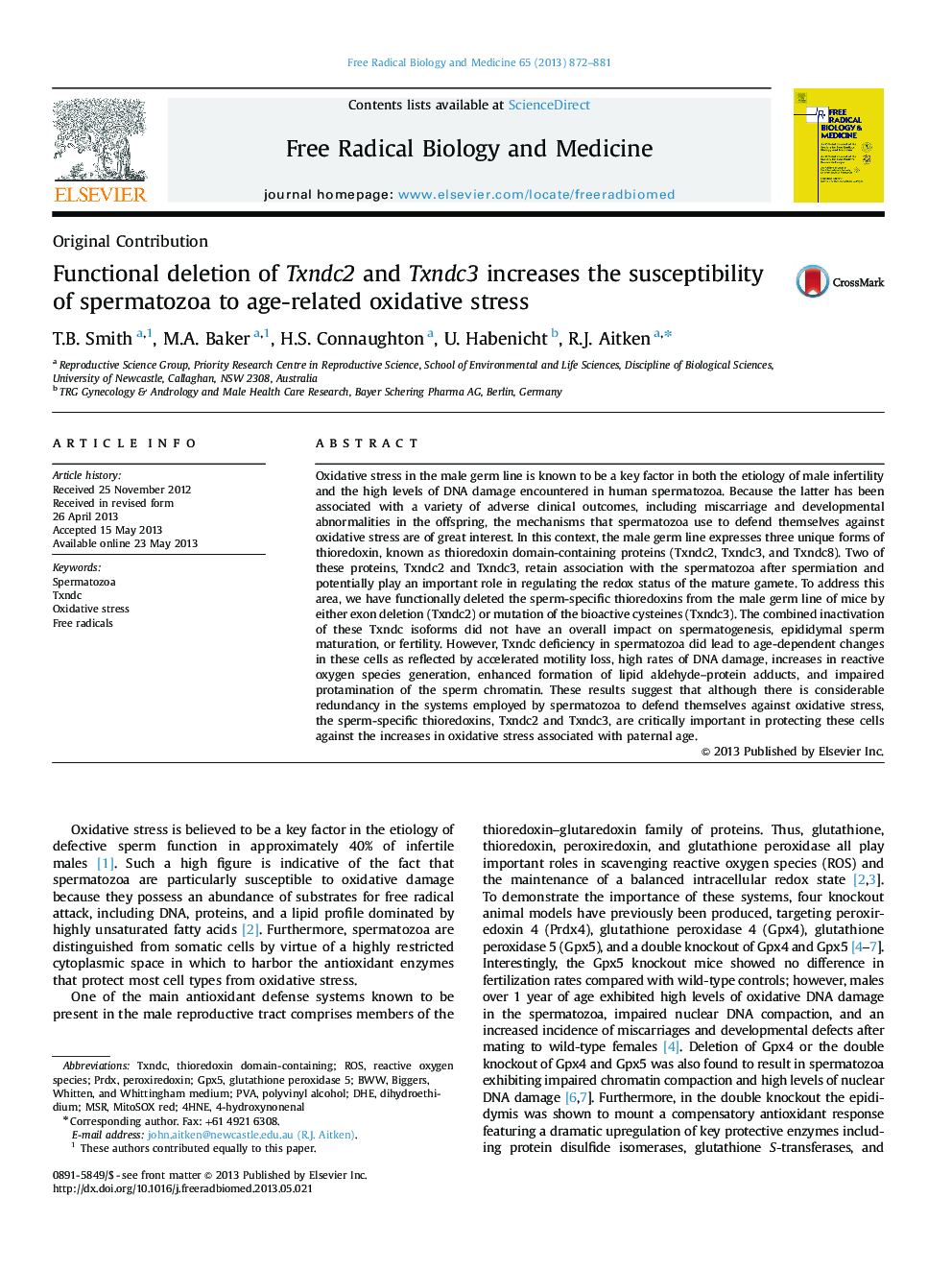| کد مقاله | کد نشریه | سال انتشار | مقاله انگلیسی | نسخه تمام متن |
|---|---|---|---|---|
| 8271722 | 1534977 | 2013 | 10 صفحه PDF | دانلود رایگان |
عنوان انگلیسی مقاله ISI
Functional deletion of Txndc2 and Txndc3 increases the susceptibility of spermatozoa to age-related oxidative stress
دانلود مقاله + سفارش ترجمه
دانلود مقاله ISI انگلیسی
رایگان برای ایرانیان
کلمات کلیدی
موضوعات مرتبط
علوم زیستی و بیوفناوری
بیوشیمی، ژنتیک و زیست شناسی مولکولی
سالمندی
پیش نمایش صفحه اول مقاله

چکیده انگلیسی
Oxidative stress in the male germ line is known to be a key factor in both the etiology of male infertility and the high levels of DNA damage encountered in human spermatozoa. Because the latter has been associated with a variety of adverse clinical outcomes, including miscarriage and developmental abnormalities in the offspring, the mechanisms that spermatozoa use to defend themselves against oxidative stress are of great interest. In this context, the male germ line expresses three unique forms of thioredoxin, known as thioredoxin domain-containing proteins (Txndc2, Txndc3, and Txndc8). Two of these proteins, Txndc2 and Txndc3, retain association with the spermatozoa after spermiation and potentially play an important role in regulating the redox status of the mature gamete. To address this area, we have functionally deleted the sperm-specific thioredoxins from the male germ line of mice by either exon deletion (Txndc2) or mutation of the bioactive cysteines (Txndc3). The combined inactivation of these Txndc isoforms did not have an overall impact on spermatogenesis, epididymal sperm maturation, or fertility. However, Txndc deficiency in spermatozoa did lead to age-dependent changes in these cells as reflected by accelerated motility loss, high rates of DNA damage, increases in reactive oxygen species generation, enhanced formation of lipid aldehyde-protein adducts, and impaired protamination of the sperm chromatin. These results suggest that although there is considerable redundancy in the systems employed by spermatozoa to defend themselves against oxidative stress, the sperm-specific thioredoxins, Txndc2 and Txndc3, are critically important in protecting these cells against the increases in oxidative stress associated with paternal age.
ناشر
Database: Elsevier - ScienceDirect (ساینس دایرکت)
Journal: Free Radical Biology and Medicine - Volume 65, December 2013, Pages 872-881
Journal: Free Radical Biology and Medicine - Volume 65, December 2013, Pages 872-881
نویسندگان
T.B. Smith, M.A. Baker, H.S. Connaughton, U. Habenicht, R.J. Aitken,